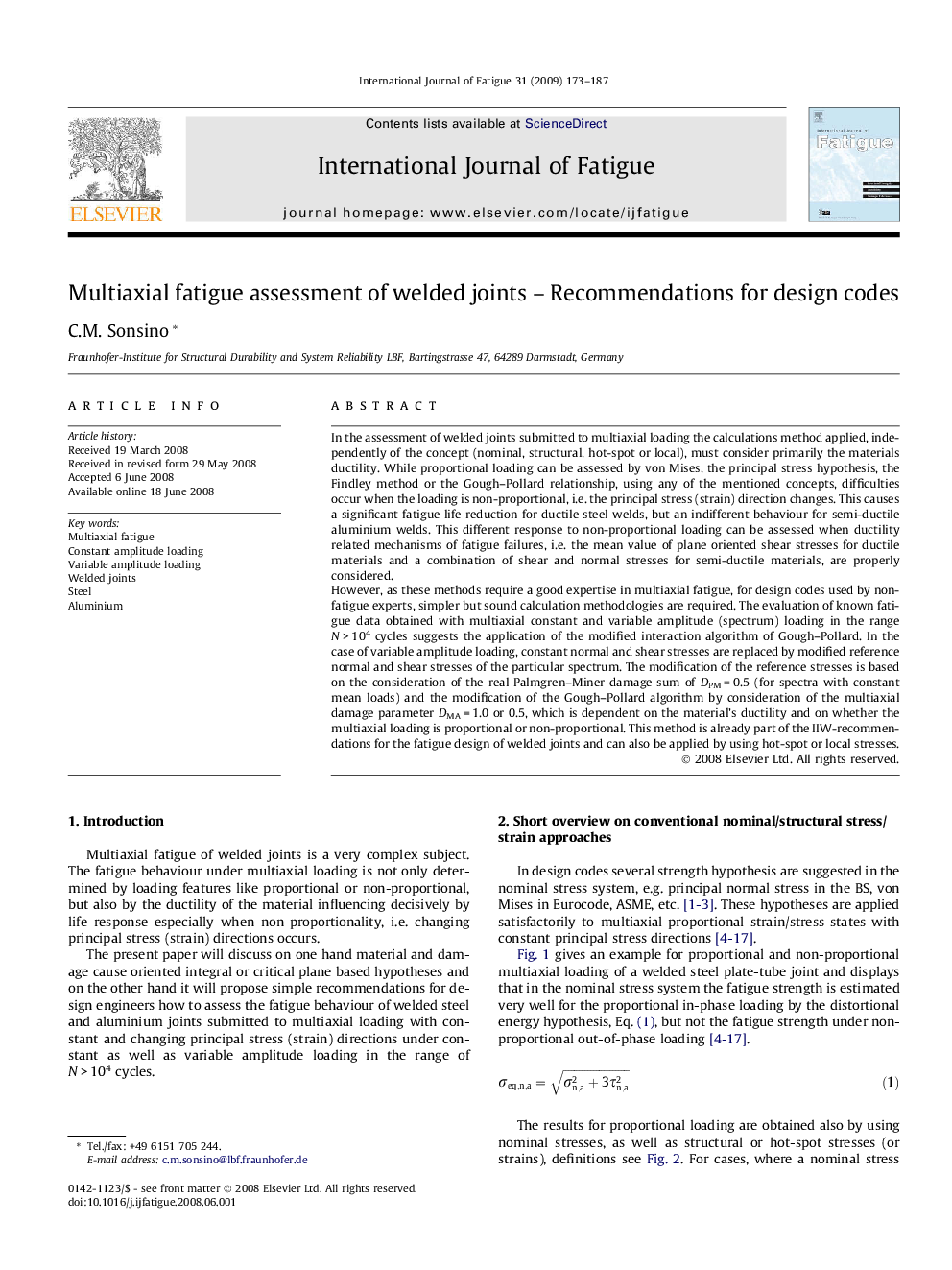| Article ID | Journal | Published Year | Pages | File Type |
|---|---|---|---|---|
| 781594 | International Journal of Fatigue | 2009 | 15 Pages |
In the assessment of welded joints submitted to multiaxial loading the calculations method applied, independently of the concept (nominal, structural, hot-spot or local), must consider primarily the materials ductility. While proportional loading can be assessed by von Mises, the principal stress hypothesis, the Findley method or the Gough–Pollard relationship, using any of the mentioned concepts, difficulties occur when the loading is non-proportional, i.e. the principal stress (strain) direction changes. This causes a significant fatigue life reduction for ductile steel welds, but an indifferent behaviour for semi-ductile aluminium welds. This different response to non-proportional loading can be assessed when ductility related mechanisms of fatigue failures, i.e. the mean value of plane oriented shear stresses for ductile materials and a combination of shear and normal stresses for semi-ductile materials, are properly considered.However, as these methods require a good expertise in multiaxial fatigue, for design codes used by non-fatigue experts, simpler but sound calculation methodologies are required. The evaluation of known fatigue data obtained with multiaxial constant and variable amplitude (spectrum) loading in the range N > 104 cycles suggests the application of the modified interaction algorithm of Gough–Pollard. In the case of variable amplitude loading, constant normal and shear stresses are replaced by modified reference normal and shear stresses of the particular spectrum. The modification of the reference stresses is based on the consideration of the real Palmgren–Miner damage sum of DPM = 0.5 (for spectra with constant mean loads) and the modification of the Gough–Pollard algorithm by consideration of the multiaxial damage parameter DMA = 1.0 or 0.5, which is dependent on the material’s ductility and on whether the multiaxial loading is proportional or non-proportional. This method is already part of the IIW-recommendations for the fatigue design of welded joints and can also be applied by using hot-spot or local stresses.
